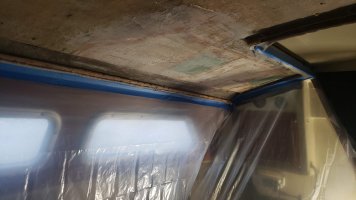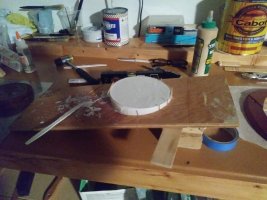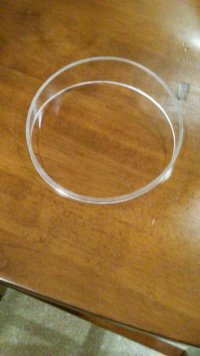Well, we got our first good work day in on the project. Of course, nothing ever goes quite to plan but I'm feeling better about getting started here.
I did debond and clean the heck out of the area. A steel bristle detail brush worked nicely here, though I would have considered something else if the area weren't going to get covered back up. I also made sure any remaining debris was out of the hole, although we had a minor emergency when the large allen key I was using fell into the core and got stuck. As much as a "steel-reinforced" deck core would've sounded cool, we managed to pull it out using some bent wire.
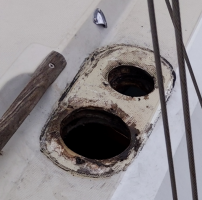
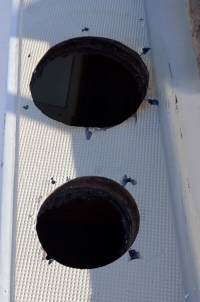
We stole an idea from someone I saw on the Ericson Facebook group, and used a basswood stick and dry-erase marker to sketch a rough idea of the interior size/shape of the hole. We then cut and numbered foam strips to match the shape.
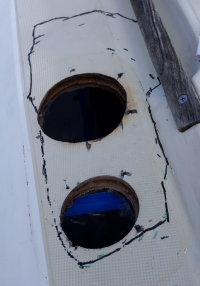
We then mixed up a batch of neat epoxy, which I gobbed against the edges of the hole as best I could with a glue brush taped to a mixing stick. This was mostly a hope and a prayer mixed with solid-feeling contact with the brush on the back edges. We did make a whole two-pump cup of West Systems disappear into there, so it had to have gone somewhere.
We then mixed up a three-pump batch of fiber-thickened epoxy, mixed to the point where it was only slightly slumpy, maybe like "natural" chunky peanut butter, instead of the Jif kind. We used icing piping cones, like the plastic cones you cut the tips off of, to shove the epoxy far back in the hole. Again, we made the whole cup disappear into the hole and packed it back using the brush+stick combo.
Plans started to fall apart a bit when it came time to shoving the foam strips in. Even at 1/4", which matches the width of the core slot, it was a hell of a time jamming the sticks in. A couple broke and got stuck, but we made do and the forward hole actually ended up very nicely slotted in. We whittled off a very slight edge from the remaining sticks in advance, and they slid in a little easier but still firmly filling the gap between the skins.
The bigger rear hole was slightly more challenging, but we did get all the foam in, and by the end we were squeezing epoxy back out from the deck, which I took as a good sign.
We covered the top of the forward hole with a slight coating of neat epoxy and another layer of thickened stuff. There wasn't time (or equipment) to grind/scarf the edges and roll out the new glass mat, so that will come another day. Similarly, we need to dremel the core from the rear hole and finish packing / sealing the edge with thickened epoxy here as well.
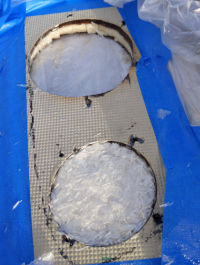
For now everything is covered again with plastic sheeting and tape. We'll have to wait for the next good day to get in there. I think if I were to do it again, I might've skipped the foam strips and just jammed it with thickened epoxy until full. We had plenty of working time due to it being mid-40s and sunny, even using the 205 Fast Hardener.
Part 2, and probably 3, still to come....

